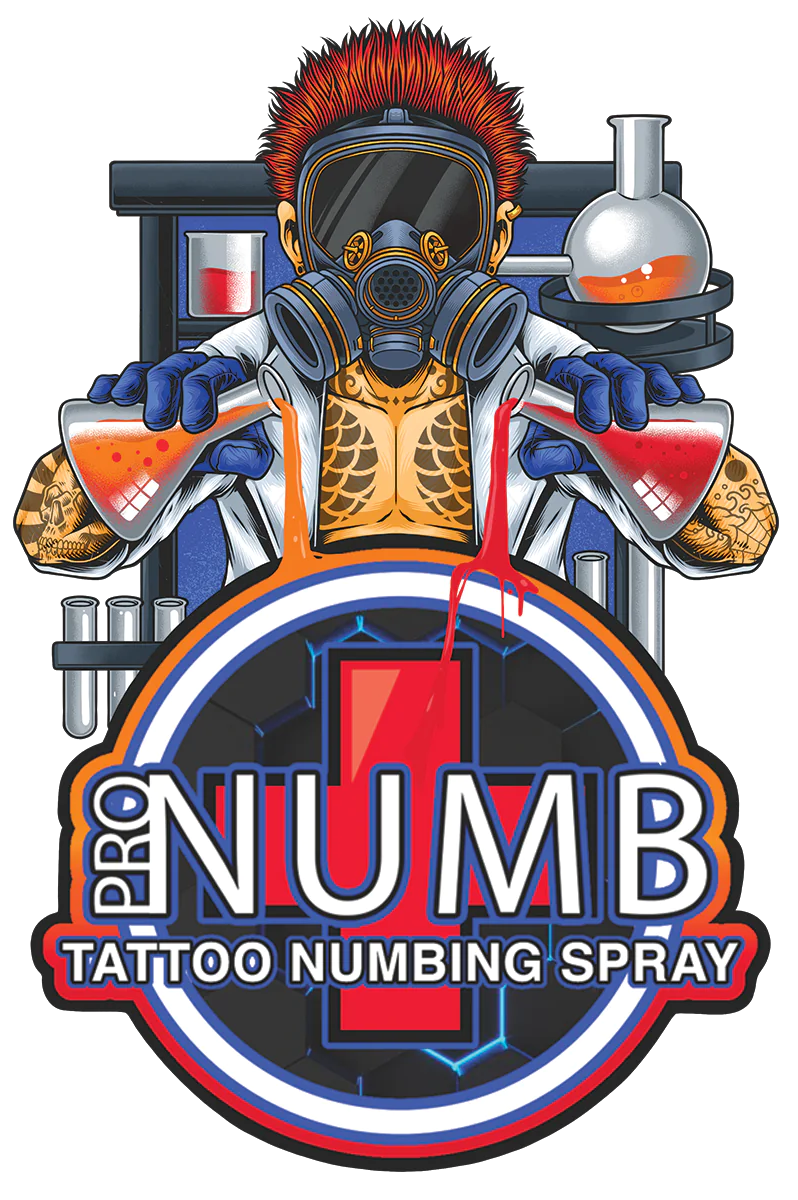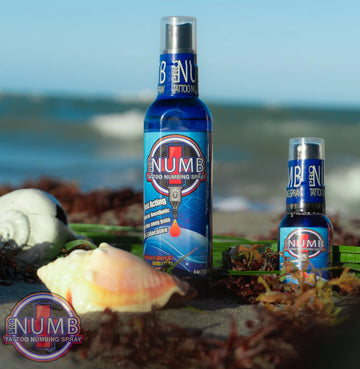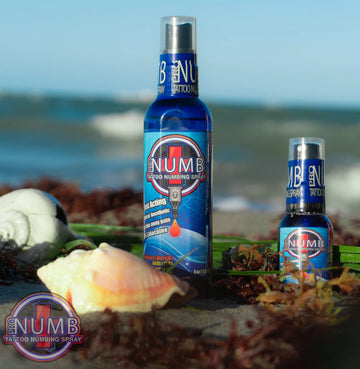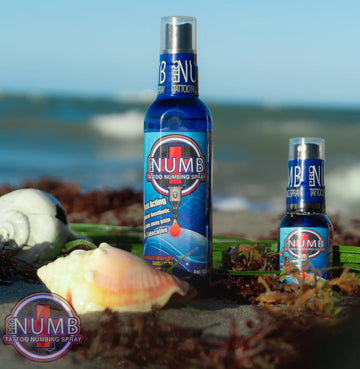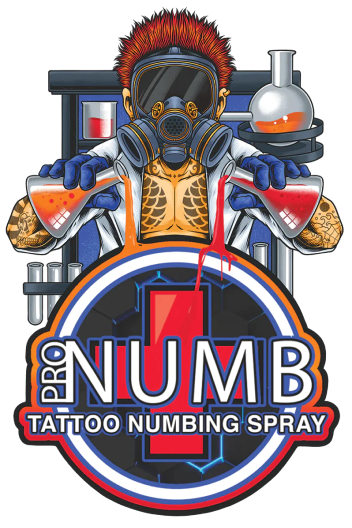This article will show you how to use tattoo numbing spray effectively before your tattoo session. Whether you are a first-timer or a seasoned tattoo enthusiast, understanding the correct application of numbing spray can significantly enhance your tattooing experience by reducing pain and discomfort.
You will get a detailed step-by-step instructions on how to use numbing spray correctly. Our aim is to demystify the process and ensure that you are fully prepared for your upcoming tattoo session, making it as comfortable and pain-free as possible.
Benefits of Using Tattoo Numbing Spray
Utilizing tattoo numbing spray can significantly enhance the tattooing experience, especially for those sensitive to pain or undergoing lengthy sessions. Here’s a detailed look at the key benefits of using tattoo numbing spray:
1. Reduces Pain and Discomfort: The primary advantage of using numbing spray is its ability to significantly reduce the pain associated with tattooing. Active ingredients like lidocaine temporarily deaden the nerve endings in the skin, making it possible to endure longer sessions with minimal discomfort.
2. Expands Tattoo Possibilities: Pain tolerance can sometimes limit the size or placement of a tattoo. With numbing spray, you can consider getting tattoos in areas known for increased sensitivity, such as the ribs, spine, or near bones, which are often avoided due to pain concerns.
3. Enhances Endurance for Longer Sessions: For large or intricate tattoo designs that require extended sessions, numbing spray can make the experience more bearable. This is particularly beneficial for full-day or multiple-hour sessions where fatigue and pain could otherwise compromise your ability to continue.
4. Minimizes Movement Due to Discomfort: Unintended movements due to pain can affect the precision of the tattooing process. By reducing pain, numbing spray helps you stay still, allowing the tattoo artist to work with greater accuracy and speed.
5. Improves Overall Experience: The anxiety and dread of anticipated pain can affect your overall tattoo experience. Numbing sprays not only lessen pain but also reduce anxiety, helping you stay relaxed and positive about your tattoo session.
Consultation and Skin Preparation
As you prepare for your tattoo session, taking the right steps before you even reach the tattoo chair can make a significant difference in your experience and the effectiveness of the numbing spray.
Consultation with Tattoo Artist
It's crucial to have a conversation with your tattoo artist about using numbing spray before your appointment. Not all artists recommend or are familiar with numbing products, and some might have preferences or advice based on their professional experience. This discussion ensures that the use of the numbing spray is integrated smoothly into the session plan, avoiding any surprises and aligning expectations.
Skin Preparation
Proper skin preparation is essential for the numbing spray to perform effectively. Here's a simple step-by-step process to prepare your skin:
1. Cleanse the Area: Start with washing the area where the tattoo will be applied using mild soap and warm water. This step removes any dirt, oil, and makeup, providing a clean canvas for both the numbing spray and the tattoo ink.
2. Exfoliate (Optional): Gently exfoliating the skin can remove dead skin cells, allowing the numbing spray to penetrate more deeply and evenly. However, be gentle and use a non-irritating exfoliant to avoid causing any skin irritation before your tattoo session.
3. Dry the Skin: After cleansing (and optional exfoliating), thoroughly pat the area dry with a clean towel. Ensure the skin is completely dry before applying the numbing spray to maximize its absorption and effectiveness.
By following these preparatory steps, you're setting the stage for a more effective numbing process, which can lead to a more comfortable tattooing experience.
How to Apply the Tattoo Numbing Spray
Using a tattoo numbing spray correctly is crucial for achieving the best results and ensuring a smooth, pain-reduced tattoo session. Follow these detailed steps to apply your numbing spray properly:
Step-by-Step Application Instructions:
1. Clean the Area
Before applying any numbing product, it’s vital to ensure that the skin area where the tattoo will be placed is thoroughly clean. Wash the area with mild soap and warm water to remove any dirt, oils, and bacteria. Pat the area dry with a clean towel. This step helps in maximizing the absorption of the numbing agents into the skin.
2. Apply the Spray
Hold the numbing spray bottle a few inches away from the skin. Spray a generous amount directly onto the tattoo area, ensuring even coverage. Do not rub the spray into the skin; instead, allow it to settle naturally. The spray form allows for a quick and clean application, which starts acting rapidly.
3. Waiting Time
After applying the spray, wait for about 15-30 minutes before starting the tattoo session. This waiting period allows the numbing agents, typically lidocaine, to fully penetrate the skin and take effect. The exact time can vary based on the product’s formulation, so refer to the specific instructions provided on the spray bottle.
4. Safety Tips
Always test the numbing spray on a small patch of skin before full application to check for any adverse reactions, such as redness, itching, or rash. Avoid using the spray on broken or irritated skin. Ensure that the spray does not come into contact with the eyes or mouth. If you experience severe burning or discomfort, wash the area immediately with water and discontinue use.
Using the Numbing Spray During the Tattoo Session
Using numbing spray during a tattoo session can greatly enhance comfort, especially during lengthy procedures. However, there are important considerations to keep in mind to ensure the session proceeds smoothly and the outcome meets expectations.
Reapplication (if applicable)
- Timing for Reapplication: For longer tattoo sessions that extend beyond the initial numbing effect—typically several hours—it may be necessary to reapply the numbing spray. Always follow the manufacturer’s guidelines regarding reapplication to avoid overuse, which can lead to skin sensitivity or other adverse effects. Most numbing sprays maintain efficacy for approximately one to two hours, after which you might need to reapply, especially if you find the sensation of pain returning.
- Method of Reapplication: If reapplication is needed, ensure the area is lightly wiped clean to remove excess ink and blood. Spray a light layer over the area again, and wait the recommended period (usually 5-10 minutes) before resuming to ensure the area is adequately numbed. It’s essential to coordinate this process with your tattoo artist to minimize disruption during the tattooing process.
Interactions with the Tattoo Process
- Effect on Skin and Ink Application: While numbing sprays are generally safe, they can alter the skin’s texture, making it slightly more challenging for the tattoo artist to work. Numbing agents may cause the skin to swell slightly, which could affect how the ink settles into the skin. It’s crucial to use products specifically designed for tattooing to minimize these effects.
- Artist Adjustments: Experienced tattoo artists are familiar with adjusting their technique to compensate for changes in skin texture due to numbing products. Discuss with your tattoo artist beforehand so they can prepare for any adjustments in their application technique.
- Ink Absorption: There is a misconception that numbing sprays might affect ink absorption or color fidelity. Quality numbing products should not interfere with the ink’s permanence or vibrancy, but always select sprays that are recommended by professionals and have proven compatibility with tattoo inks.
Aftercare and Considerations
Proper aftercare is crucial to the healing of your tattoo and the effectiveness of the numbing spray does not end once the tattoo needle stops. Here’s how to ensure that your newly inked skin remains healthy, vibrant, and free of complications.
Post-Tattoo Care
- Immediate Care: Once your tattoo session is complete, the tattoo artist will clean the area and may apply a thin layer of petroleum jelly or a specific tattoo aftercare ointment over the tattoo. This is followed by wrapping the area with a sterile bandage or plastic wrap to protect it from infection and to prevent the tattooed area from rubbing against clothing and becoming irritated.
- First 24 Hours: Keep the tattoo covered for the first few hours post-tattoo as advised by your tattoo artist, but no longer than 24 hours. After this period, gently wash the tattoo with mild, unscented soap and lukewarm water. Pat it dry with a clean, soft cloth or paper towel.
- Moisturizing: Apply a fragrance-free moisturizer or a specialized tattoo aftercare product to help keep the tattooed skin soft and hydrated. This is essential as dry skin can lead to cracks and excessive itching, which might damage the tattoo design.
- Avoid Sun Exposure: Keep the tattooed area out of direct sunlight. Sun exposure can not only lead to sunburn but can also fade the ink prematurely during the healing process. Once healed, use sunscreen to protect the tattoo and maintain its vibrancy.
Potential Side Effects
- Common Reactions: It's normal to experience some redness, swelling, and slight burning sensations after using numbing spray and getting a tattoo. These symptoms typically subside within a few days. However, excessive swelling, prolonged redness, or signs of pus can indicate an infection.
- Allergic Reactions: While rare, some individuals may experience an allergic reaction to the ingredients in numbing sprays. Symptoms might include severe rash, itching beyond the tattooed area, or hives. If you notice these symptoms, it's important to seek medical advice promptly.
- Long-Term Care: Watch for any prolonged side effects or changes in skin texture. If you experience ongoing discomfort or suspect the tattoo is not healing properly, consult with a healthcare provider. It's also a good idea to follow up with your tattoo artist if the ink appears to be fading unevenly or if the tattoo becomes excessively flaky.
